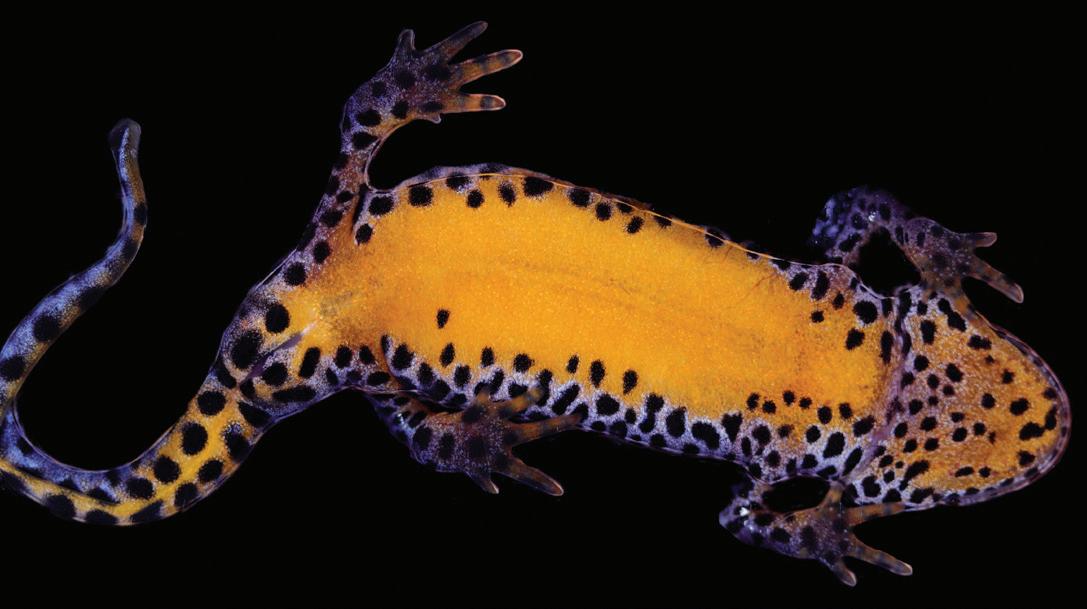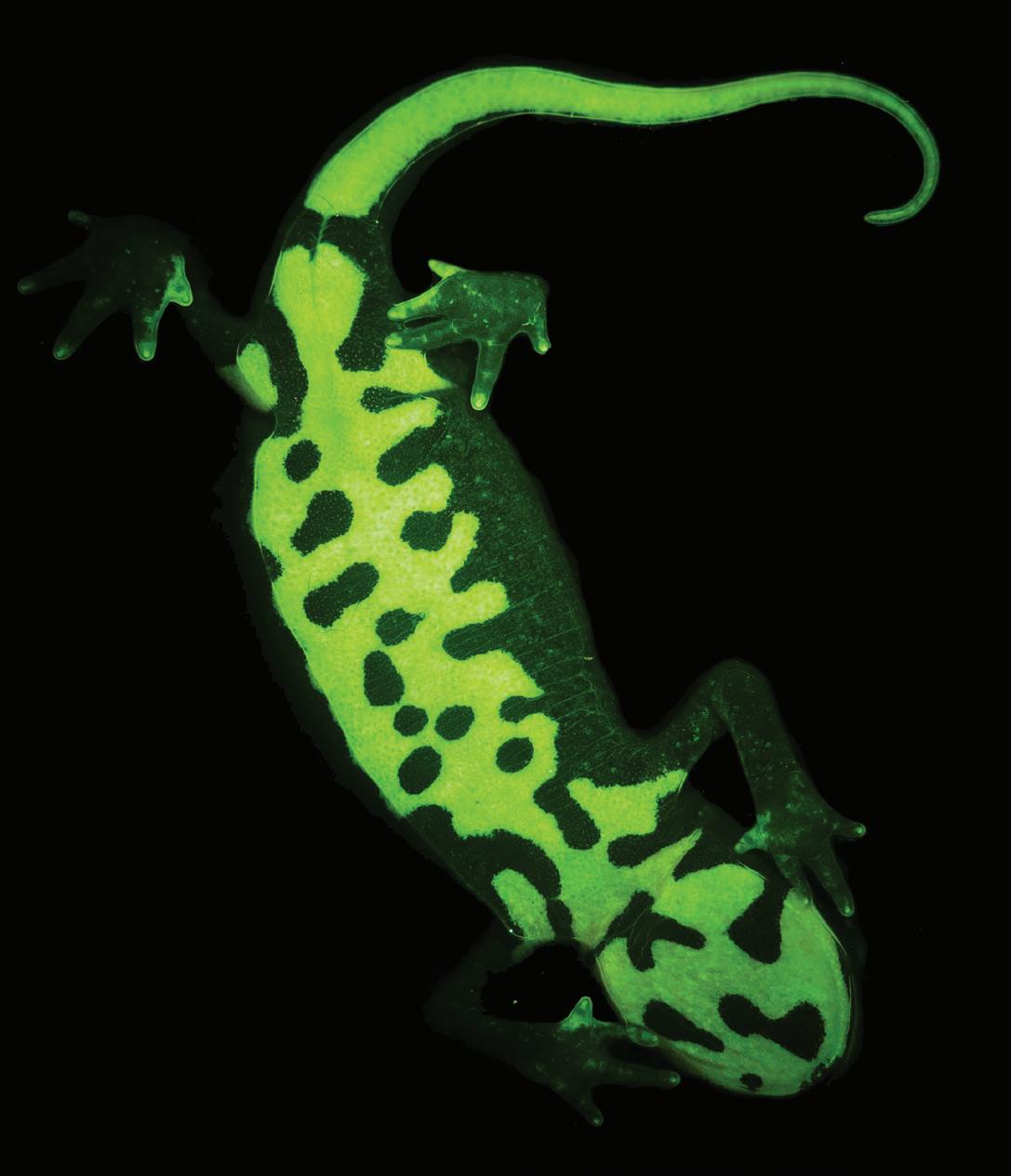
1 minute read
Biofluorescence in amphibians
Above top: Cranwells frog Above middle: Belly of an alpine newt Below: Chinese fire belly newt


Research by professors Dr. Jennifer Lamb and Dr. Matthew Davis made a splash in February when it was published in Scientific Reports.
They found biofluorescence, where organisms emit a fluorescent glow after absorbing light energy, may be widespread in amphibians including salamanders and frogs.
Biofluorescence had previously been observed in only one salamander and three frog species.
Lamb and Davis exposed one to five individuals from 32 amphibian species to blue or ultra-violet light and measured the wavelengths of light emitted by the animals using spectrometry.
They found that all species examined were biofluorescent, although the patterns of fluorescence differed substantially between species ranging from fluorescent blotches and stripes to fluorescent bones or all-over fluorescence.
The findings suggest that biofluorescence may enable amphibians to locate each other in low-light conditions as their eyes contain rod cells that are sensitive to green or blue light. Biofluorescence may create more contrast between amphibians and their environment, allowing them to be more easily detected by other amphibians. It could also aid amphibians in camouflage, predator mimicry or mate choice, as has been observed in other biofluorescent species.
The findings suggest that ancestors of modern amphibians were able to biofluoresce, resulting in the phenomenon being widespread among amphibians alive today.
Their research recieved worldwide attention and was broadly covered by the press including by the New York Times, Nature, Science News, Scientific American, Wired and others.
Lamb is an assistant professor of biology at St. Cloud State with research interests in herpetology, population genetics and conservation. She has done much work with salamanders and other amphibians.
Davis is an associate professor of biology at St. Cloud State with research interests in fishes, deep sea, bioluminesence, evolution, systematics, macroevolution, genomics and anatomy. He has previously studied bioluminescence in fish species.
Scientific Reports is an open access journal publishing original research from across all areas of the natural and clinical sciences.







